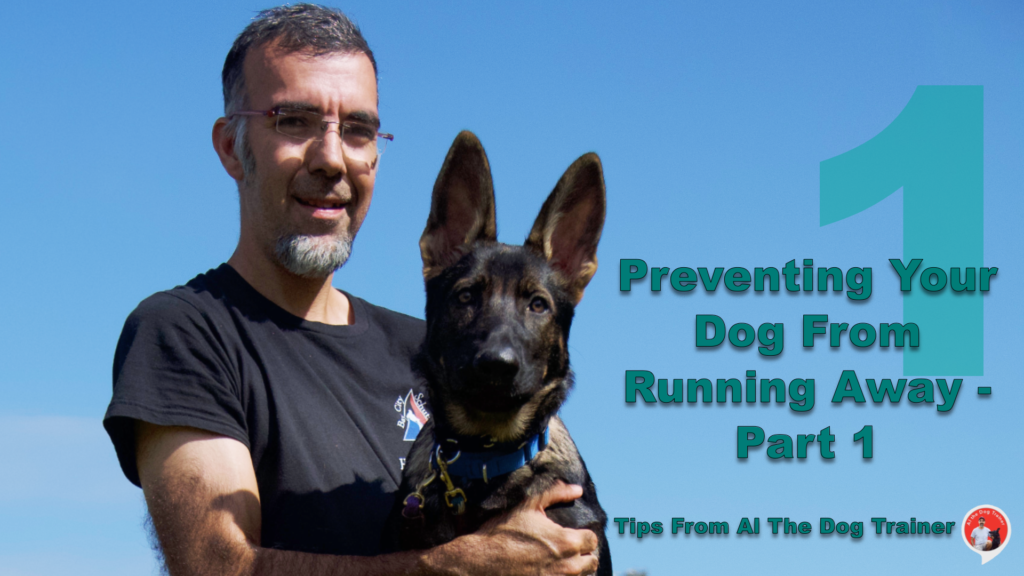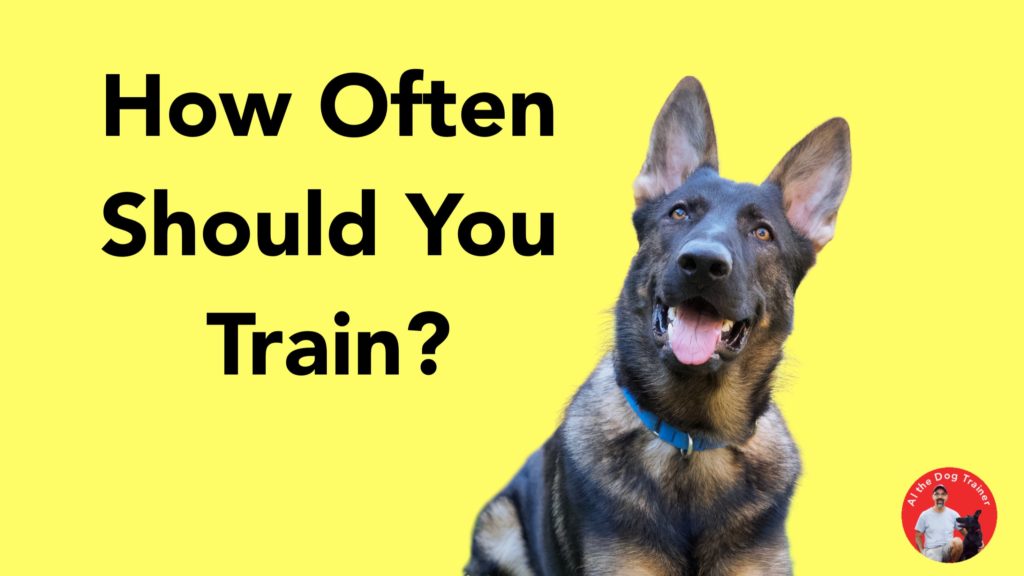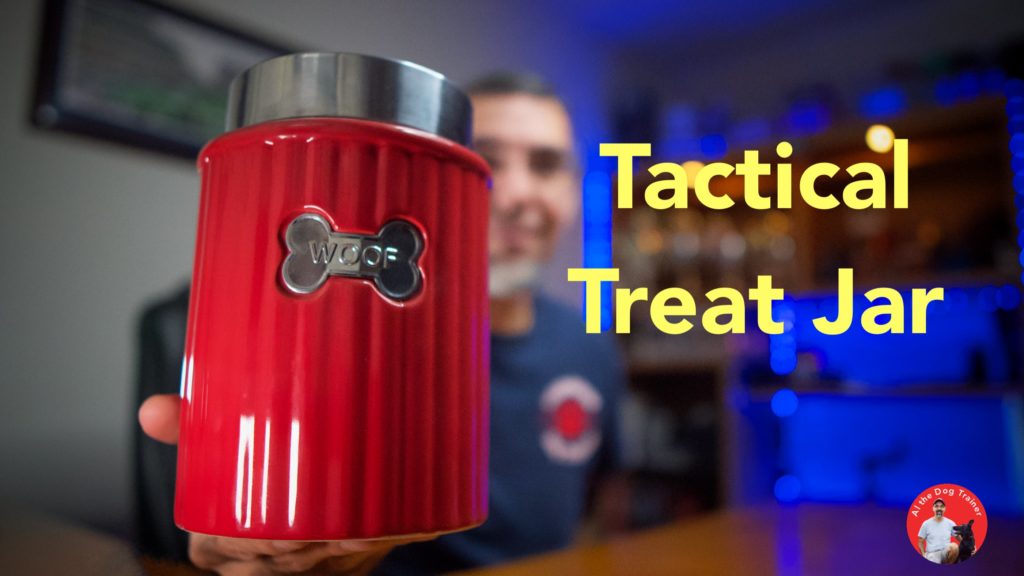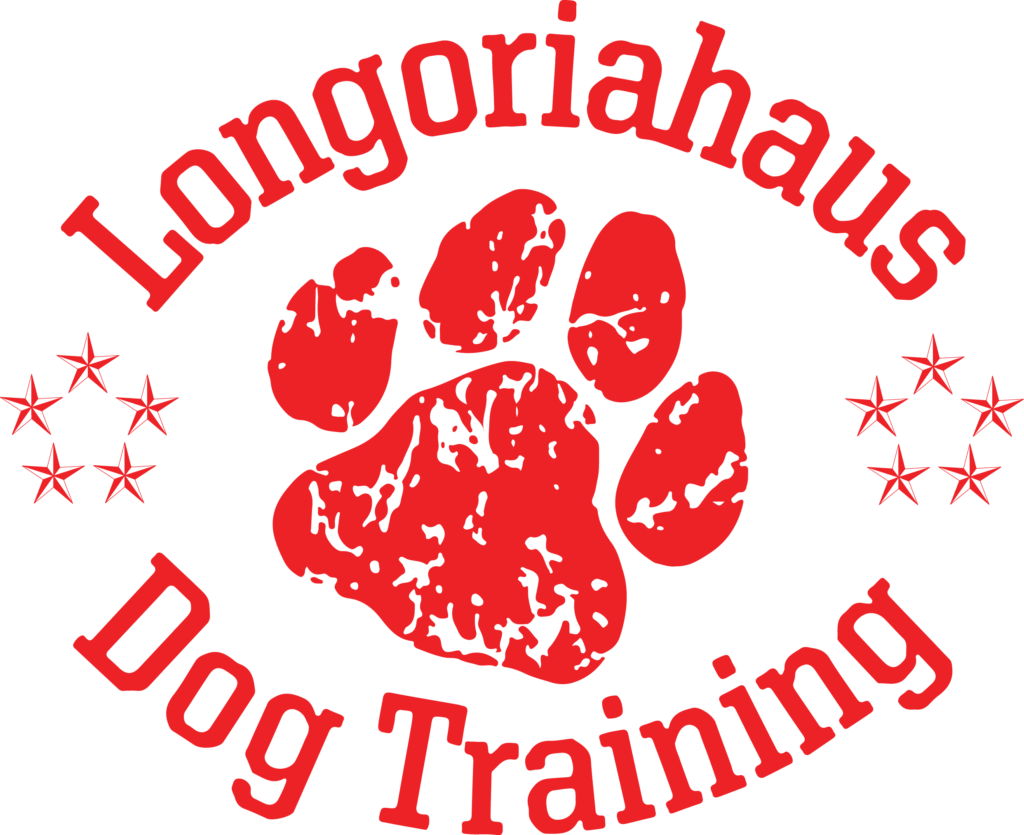
Today’s topic is: Preventing your dog from running away. This is something that’s actually possible with a small amount of training. It’s not an insurmountable amount, and it’s not something that you necessarily need to continuously train. You do have to maintain the training that your dog has. But however, the training is not all that complicated. What I’ve learned over the past six months with my two young German Shepherds is that there are several ways to go about teaching your dog to not run away.
So the obvious answer. And I guess this could be the third method. The obvious answer is that yes, you should develop a recall. And yes, you should get your dog to come when you call them. I’ve talked about that quite a bit. I’ll be sharing more about that in the future because I’m learning some things on how to improve that as an obedience command. But I really want to take a look at the two places that we really care quite a bit about when a dog is getting away from us. That being the front door and then also obviously the front of our property.
The Front Door
So I want to first start covering the front door because this is a good place to be able to begin to teach your dog about running away. This training is actually very simple. So what you should understand about training, and many of you that have been following probably have already heard what I’m going to say next. But here it is. Creating boundaries generally comes from negative emotions that your dog has.
Negative emotions aren’t necessarily a bad thing. They’re actually good. They don’t make you feel great. And that’s the point. Negative emotions help you not feel great about doing something. So that way you don’t continue to do that thing over and over. That’s really the benefit of using any kind of negative emotion. So let’s talk about the front door. Because it is such a safety hazard, I make it very simple to be able to train a dog not to run at the front door.
There is one variable here that you’re going to want to get right. And it’s not necessarily something that I can share specifically with you because it is unique to your dog. But I am going to give you the basic setup of how to prevent your dog from running out the front door.
Collars
You will need your treat pouch with your dog’s food, and that needs to be on your waist. You’ll need to have about a 4-5 foot long leash, and a training collar. That’s really the big variable in this one. Most dogs will do fairly well with this using one of the three following collars. A British slip lead, a Starmark prong collar, and a Herm Sprenger prong collar. Again, I don’t know which one is right for your dog, but one of those has a very high likelihood of getting it done, of helping your dog to understand not to go out the front door.
So once you’ve actually found the training collar, that’s going to get the job done for you, here’s how you would go about implementing the training. You would have the treat pouch on your waist and a slack line connected to your training collar and head to the front door. What you have to do next is the part that isn’t intuitive. You need to leave the leash completely slack as you begin to open the door.
Yes, your dog is going to cross the plane of the door, going outside. At this point, before your dog has crossed the plane of the door, you should do two things. Well, one, you should say nothing. Two, you should leave the leash slack once your dog has crossed the plane of the door. This is where you can actually begin to create the psychological boundary by creating a negative emotion. And if you have a training collar, then you would put firm pressure down the training collar as the dog is on the other side. It doesn’t need to be overly firm. It just needs to be firm enough to slightly hurt your dog’s feelings.
Say Absolutely Nothing
And the training collar needs to continue to be taught until the dog comes on the other side of the door. At that point, the leash should go slack, and then you should close the door, and then you should repeat the process of opening the door, saying absolutely nothing to the dog, allowing them the opportunity to cross the door. If they do cross the door, you will repeat the process with your training collar.
Now that’s not it. There’s one more important step, and this is probably the most important part of this whole thing, but both of these parts are necessary. You should open the door and if the dog chooses not to go out the door, then this is where you’re going to tell your dog what a good dog it is and begin to reward your dog.
This is not a very difficult procedure.
Again, the hardest part is discovering which training collar is going to get it done. I don’t feel that buckle collars will do a good job, but it is possible, but I think it’s a very small number of dogs that are going to react well to a buckle collar. Again, those three training collars that I mentioned earlier, in my opinion, are going to do the best job of teaching your dog to not run away at the front door.
I really wanted to be detailed with this to help some of you all prevent your dogs from running away. Because nobody needs the tragedy of a dog that’s run away and gets lost, or maybe even get hit by a car or anything like that.
Be on the lookout for Part 2 on preventing your dog from running away on Monday. I will share with you guys the other method that I use for preventing a dog from running away way from the front yard.
Remember you can always visit my YouTube Channel and find more tips like this right here at www.longoriahausdogtraining.com.
Happy Training!





